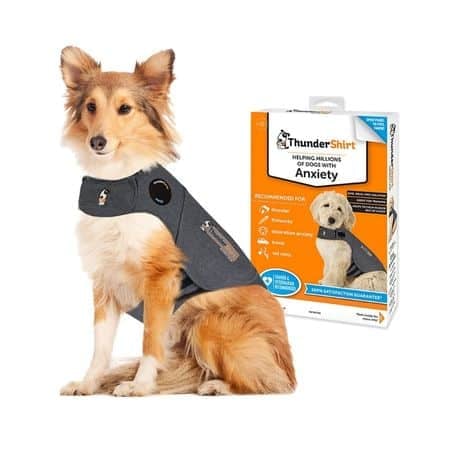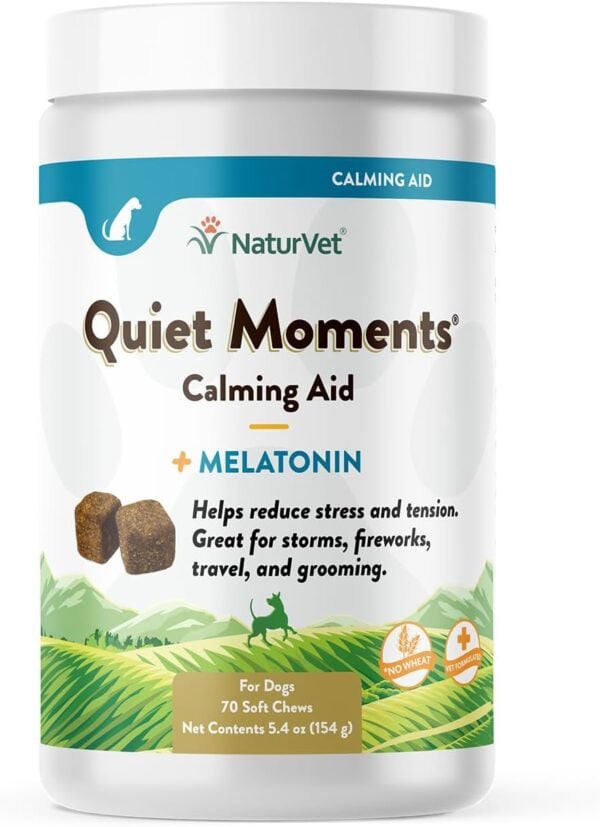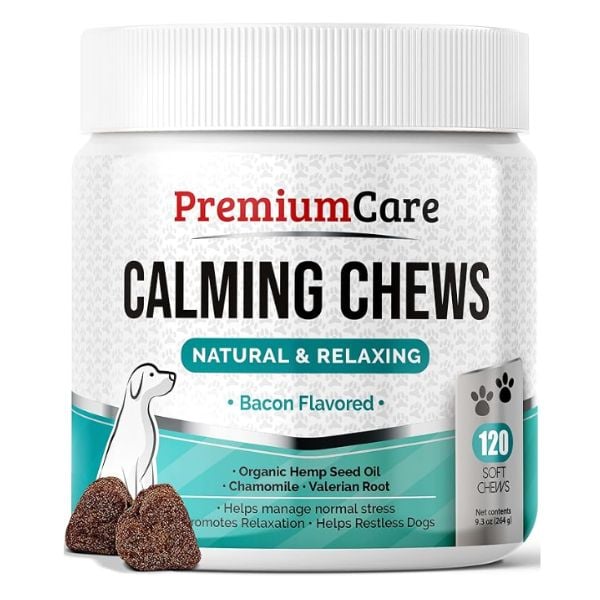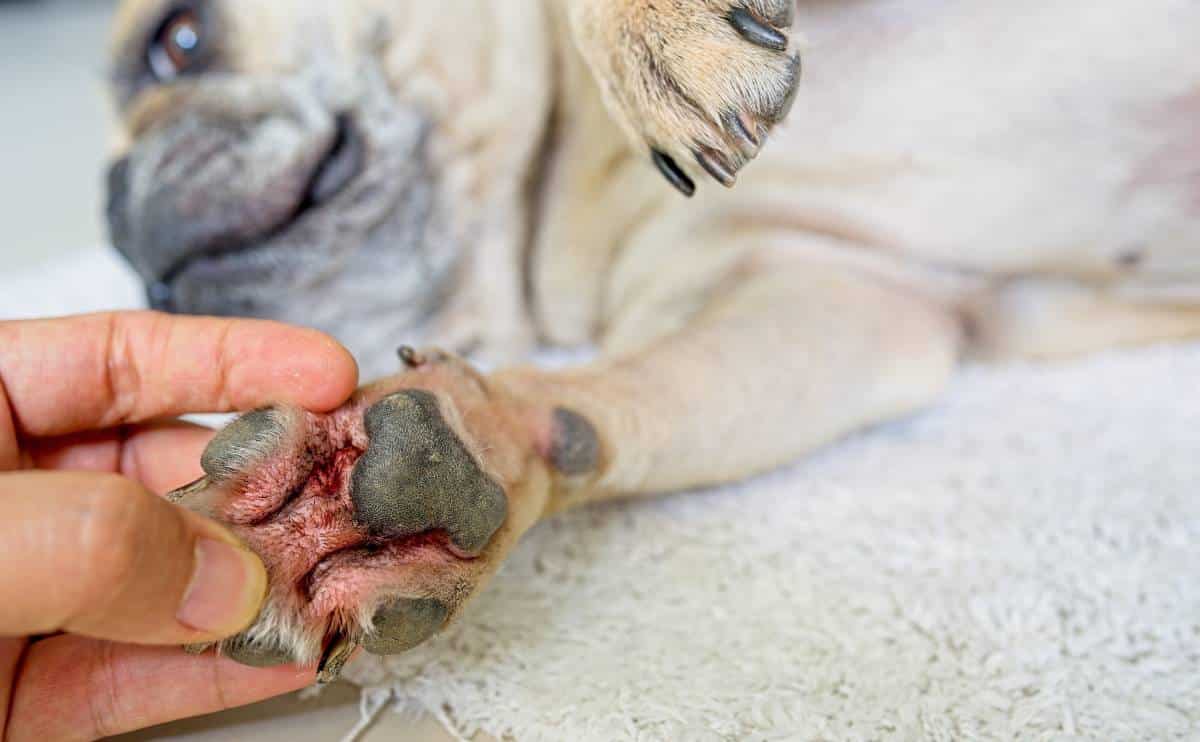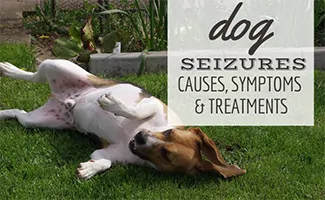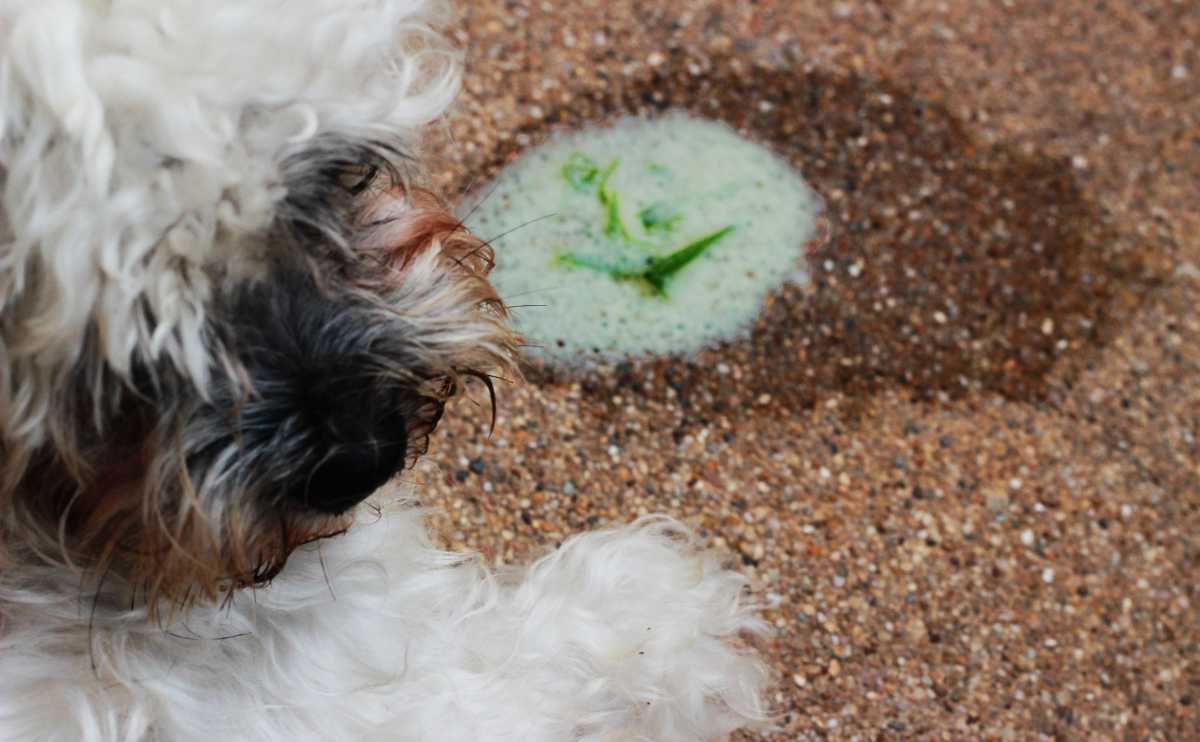Dog Anxiety: Why Your Pup Acts Like You Died Every Time You Leave The Room
When you purchase through links on our site, we may earn a commission. Here’s how it works.
You step out for coffee. Your dog acts like you vanished into a black hole. Chewed shoes, dramatic howling, pacing like a tiny furry detective. Yeah, that’s probably dog anxiety.
Table of Contents
The signs are weird, the causes are sneakier than you think, and I’m breaking down what actually helps (and what might make it worse).

Does Your Dog Do This? It Might Be Anxiety
Dog anxiety doesn’t always show up as nervous shaking or barking. Sometimes, it’s subtle. Other times, it looks like chaos – chewed furniture, constant pacing, or nonstop howling the second you leave the house.
Anxiety in dogs can be triggered by separation, unpredictability, or even small environmental changes. It shows up differently in every dog, but most of the signs are rooted in stress, fear, or overattachment.
Common Signs of Dog Anxiety
- Pacing or circling when left alone
- Barking, whining, or howling persistently
- Destroying items (pillows, blinds, shoes) – especially near entryways
- Following you around the house constantly
- Panting or drooling with no physical exertion
- Licking paws or chewing on themselves
- Accidents indoors, even if fully house-trained
- Hypervigilance – ears up, eyes darting, always “on alert”
These aren’t random bad habits; they’re often symptoms of anxiety. If you’re seeing more than one consistently, it’s worth paying attention.
Recognizing the signs is the first step. The next? Figuring out what’s triggering it, and that’s usually not as obvious as you might expect.
Coming up next: 7 surprisingly common things that might be triggering their anxiety, and a few of them might catch you way off guard.
7 Weird Things That Can Trigger a Dog Meltdown
Some anxiety triggers are obvious – loud noises, being left alone, and new places. But others? You might never guess. Dogs are hyper-aware of changes in their environment, and what seems small to us can feel like a major disruption to them.
The key is paying attention to when their anxious behaviors show up, because the pattern usually points to the trigger.
Here are seven common but sneaky triggers behind dog anxiety:
- Grabbing Your Keys or Bag – Even the sound of keys jingling can set them off. They start pacing, whining, or trying to block the door, because they’ve learned it means you’re about to leave.
- Vacuum Cleaners, Alarms, or High-Pitched Sounds – The frequency of these sounds is intense for dogs. Even an oven timer or text notification can be enough to spike their stress levels.
- Changing the Furniture Around – Rearranging a room or adding something new (like a fan, chair, or mirror) can totally throw them off. Dogs rely on familiar space to feel safe, so sudden changes can make them feel vulnerable.
- Inconsistent Routines – Feeding times, walk times, bedtime. If you’re all over the place with those, it can leave them feeling unsettled. Routine gives structure. Without it, some dogs stay on high alert.
- Other Animals Outside – Squirrels, cats, other dogs, even if you don’t see them, your dog probably does. That low growl or random burst of barking might be a reaction to something you never saw coming.
- Strong Scents (Like Perfume, Cleaning Products, or Candles) – Their noses are absurdly sensitive. New smells can be overstimulating or even confusing, especially if it’s something you don’t wear or use regularly.
- Stressed Humans – They pick up on body language and tone more than we realized. If you’re anxious, rushing, frustrated, they reflect that energy right back.
If their behavior seems to “come out of nowhere,” it probably doesn’t. There’s almost always a trigger, even if it’s one that you haven’t connected the dots on yet.

Start tracking when and where these behaviors happen, and the patterns should become pretty clear. Once you spot the triggers, you can start figuring out how to actually help.
The 5 Main Types of Anxiety Triggers
Most of these quirks fit into five broader categories:
- Fear Triggers: Loud noises, vet visits, car rides, unfamiliar people or animals.
- Separation Triggers: You leaving the house or shifting daily routines.
- Environmental Triggers: Moving furniture, new smells, sudden changes at home.
- Noise Triggers: Thunder, fireworks, vacuums, alarms.
- Internal Triggers: Underlying health issues or simply picking up on your stress.
Quick Takeaway: When you can slot their behavior into one of these categories, it’s much easier to choose the right fix, whether it’s training, structure, or supportive tools.
Coming up next: the most dramatic form of dog anxiety – separation anxiety, where being alone feels less like “see you soon” and more like “goodbye forever.”
Separation Anxiety: Why Your Dog Acts Like You Died
If your dog falls apart the second you leave, you’re not alone. Separation anxiety is one of the most common forms of dog anxiety, and it’s also the one that creates the most drama, both for them and for you.
What It Looks Like
Dogs with separation anxiety panic when you’re gone. The signs can be loud (such as howling or barking), destructive (chewing doors or scratching floors), or subtle (refusing to eat or pacing endlessly). To them, you stepping out isn’t “back soon”; it feels like abandonment.

Why It Happens
Separation anxiety usually develops in dogs that are deeply attached to their people. Changes in routine, a move, or even a brief stay somewhere new can trigger it. Some breeds, the so-called “velcro dogs”, are especially prone to this clinginess.
What Helps
- Practice short departures and returns so they learn you always come back.
- Providing them with a safe space that includes familiar items, such as a calming dog bed, a toy, music, or background noise, can help make being alone less stressful.
- Keep departures and arrivals calm. Making a big deal of leaving or returning just adds more emotional highs and lows.
- In severe cases, training plans from a professional or veterinarian-approved aid may be necessary.
Quick Takeaway: Separation anxiety isn’t your dog being stubborn; it’s genuine panic. Teaching them that being alone is safe takes time, but it’s one of the most important steps in easing dog anxiety overall.
Want More Help With Separation Anxiety? Check out our full guide on separation anxiety for step-by-step training tips, tools, and real fixes that make a difference.
Coming up next: how to treat dog anxiety without losing your mind, and why guessing usually makes things worse.
3 Ways To Treat a Dog’s Anxiety
Once you’ve spotted the signs and figured out the triggers, the next step is treatment. Here’s where many people go wrong: guessing. Trying random fixes without a plan usually frustrates you and confuses your dog.
A better approach is to think in layers. Start with training, adjust the environment as needed, and add supportive tools if necessary.
1. Behavioral Training
This is the foundation. Dogs with anxiety often need to relearn how to stay calm in stressful situations. Desensitization (gradually exposing them to their triggers in small doses) and counterconditioning (teaching them to associate triggers with something positive, like treats) are two of the most effective strategies.
An example of desensitization is if your dog is anxious about car rides, you can start by getting them near the car on day one and reward them with a treat. The next day, you get them in the car and reward them for just sitting there. On day three, you take a short drive and reward them afterwards.
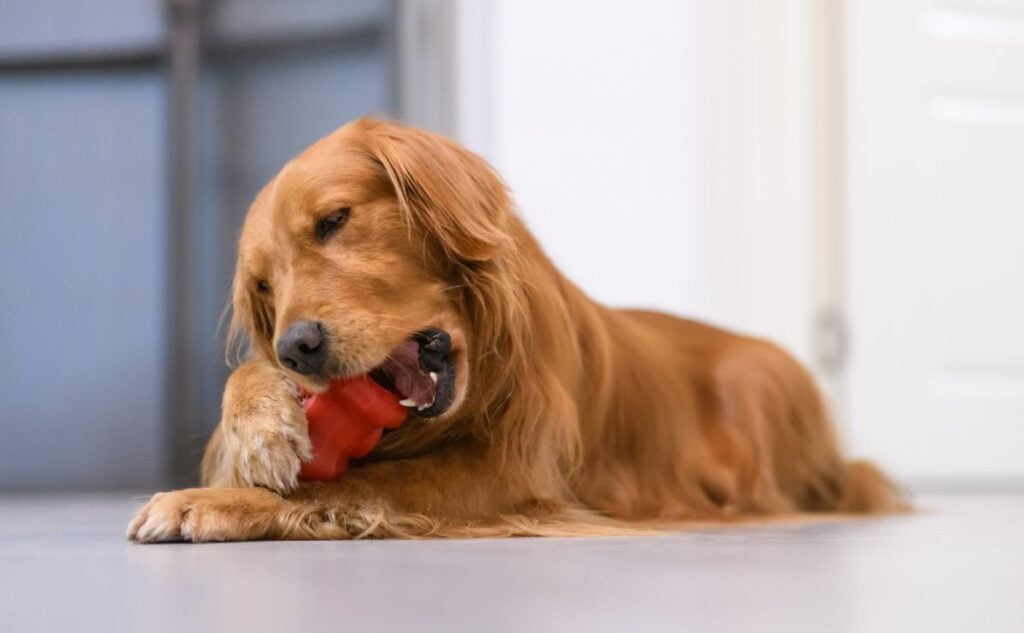
Giving your dog a puzzle toy before you leave can divert your dog’s attention from your absence to playing with a toy full of treats that can occupy them for 15-20 minutes or longer. A frozen peanut butter-filled Kong is also a good choice. This is an example of counterconditioning.
Quick Takeaway: Remember that each dog is unique, and some may progress through the stages more quickly than others. Just be patient and progress at your dog’s pace. Consistency matters; short, repeated sessions are more effective than long, overwhelming ones.
2. Environmental Changes
Small tweaks to your routine and their surroundings can lower stress. Creating a safe zone (such as a crate, quiet room, or designated spot with familiar toys), sticking to consistent feeding and walking times, and providing mental stimulation (through puzzle toys and sniff walks) can all help reduce anxious behaviors.
Sometimes predictability is the best medicine.
Thinking About Crate Training? Don’t miss our complete guide to crate training, from first steps to fixing common mistakes.
3. Supportive Aids
There are plenty of tools designed to take the edge off. Calming supplements, anxiety wraps, pheromone diffusers, or even white noise machines can make a noticeable difference for certain dogs.
The key is to use them alongside training and structure, not in place of them.
Quick Takeaway: Think of treatment as a toolkit, not a one-size-fits-all cure. Start with training, support it with environment, and layer in calming aids as needed. The goal isn’t to stop every anxious behavior overnight; it’s to build long-term coping skills.
Coming up next: the products, tools, and supportive aids people swear by for dog anxiety, including a few that sound strange but really do the job.
8 Calming Fixes For Dog Anxiety
There’s no single cure for dog anxiety, but there are plenty of tools and tricks that can make life calmer – for them and for you.
Think of this list as a menu of supportive aids: you probably won’t need all of them, but picking the right combo can help your dog chill out without you losing your mind.
1. Calming Vests & Wraps
These work like a weighted blanket, giving steady, gentle pressure that makes many dogs feel secure. Owners swear by them during thunderstorms, fireworks, or car rides.
Many dog owners find that a ThunderShirt or a similar anxiety vest is a great non-medicinal approach to helping their dogs through stressful events like thunderstorms and fireworks. The concept is that dogs feel safer and secure when they’re wearing a garment that swaddles and compresses around them.
Another option is The Calm Vest from Honest Paws. Like the ThunderShirt, it’s a medication-free solution that can help soothe dogs by distributing pressure over their back and sides.
Our Personal Experience With A Calming Vest For Anxiety
We tried The Calm Vest on our puppy Georgie in exchange for an honest review. Georgie immediately seemed more at ease and comfortable when wearing the vest. He curled up in a ball, and the vest seemed to make him relax.
The cotton fabric is super soft, seems durable, and is machine washable. The vest overlaps in the belly area with Velcro strips so you can make it snug.
– Sadie Cornelius, Dog Mom & Long-Time Friend of Canine Journal
Does every dog love being gently squeezed? No. But for the ones that do, it’s like doggy Xanax in vest form.
2. Pheromone Collars & Diffusers
Pheromone collars like these calming collars for dogs release synthetic versions of the pheromones that a nursing mother dog gives off, essentially comfort scents. You won’t notice it, but your dog might relax like they just walked into a doggy spa.
3. Comfort Toys & Beds
Heartbeat plushies, snuggle beds, or even just a favorite stuffed animal can help anxious dogs feel less alone.
Some puppies and dogs have anxiety issues when you’re just starting crate training. Still, many owners swear by the SmartPetLove Snuggle Puppy Behavioral Aid Toy to ease separation anxiety. This plush anxiety toy has a pulsing heartbeat and a heat pack to mimic the comfort of their mother or littermates.
Is it a little weird to buy your dog a toy that “breathes”? Maybe. But if it saves your shoes, it’s worth the awkward Amazon order history.
4. White Noise or Calming Sounds
A box fan, a white noise machine, or even YouTube playlists made for dogs can block out the sounds of thunder, fireworks, or your neighbor’s leaf blower.
Bonus: Some of the “relaxing dog music” is surprisingly good background noise for humans, too.
5. Calming Chews & Treats
These typically contain ingredients such as L-theanine, chamomile, or valerian root. They’re safe for most dogs and can take the edge off without making them groggy. These NaturVet Calming Chews contain calming ingredients and melatonin to help pups remain calm.
Think of it as the canine version of sipping chamomile tea instead of reaching for coffee number four.
6. CBD or Hemp Products
Some owners swear CBD is a game-changer for dog anxiety. Research is still developing, and not every dog responds the same way, but it’s an option worth asking your vet about.
CBD is found in cannabis and hemp, and some dog owners find it effective in treating various health conditions, including anxiety. Learn more about how CBD oil or treats can help manage your dog’s anxiety. Learn more about the benefits of CBD for dogs.
One that we like is the highly-rated PremiumCare Calming Treats for Dogs, which may help ease your dog’s anxiety. PremiumCare bacon-flavored treats contain organic hemp seed oil, chamomile, valerian root, L-tryptophan, and organic ginger root for a calming effect.
Just stick to products actually made for pets, don’t hand them a random gummy from your nightstand.
7. Melatonin
A melatonin supplement can help with nighttime anxiety or trouble settling down. It’s one of those “yes, but” options: yes, it works for some dogs, but you absolutely need to check with your vet on the dosage. Otherwise, you might just end up with a very sleepy dog staring at you like you broke them.
8. Essential Oils
Lavender essential oil can be useful in treating dog anxiety. It’s safe and gentle for dogs (but harmful for cats!). You can rub a diluted drop into your dog’s ears, fur, and skin to help calm and soothe them.
Lavender is the most popular, but here’s the thing: essential oils are powerful, and dogs process them differently than we do. If you try this route, stick with a diffuser in a well-ventilated space and never apply undiluted oils directly to their skin.
Essentially, avoid turning your dog into a potpourri sachet.
Learn more about essential oils for dogs, including usage and safe dosages.
Quick Takeaway: Not every fix will work for every dog, but with a little trial and error, you can usually find a combo that eases their anxiety. The key is pairing these aids with structure and training. Otherwise, you’re just buying lavender candles and weighted vests for fun.
This brief video from Chewy offers excellent tips on how to help your dog overcome anxiety.
Coming up next: puppy anxiety versus adult dog anxiety, and why the solutions aren’t always the same.
Puppy vs. Adult Dog Anxiety
Puppies and adult dogs both get anxious, but for totally different reasons, and the fixes aren’t always the same.
Puppy Anxiety
Puppies are basically tiny chaos machines with separation issues. Nighttime whining, crate crying, and panic when you walk into another room are classic. Most of it comes down to inexperience: everything is new and overwhelming.
The good news? With short practice separations, safe spaces, and routine, most puppies grow out of the worst of it.
Dealing With Puppy Fear Periods? Check out our guide on puppy fear periods, including what they are, when they happen, and how to help your pup through them.
Adult Dog Anxiety
Adult dogs are another story. When anxiety shows up later in life, it usually means something has changed, either a move, a new schedule, a new family member, or even something small like rearranged furniture.
Unlike puppies, adults don’t usually “age out” of anxiety. They need structure, training, and sometimes extra tools to break the cycle.
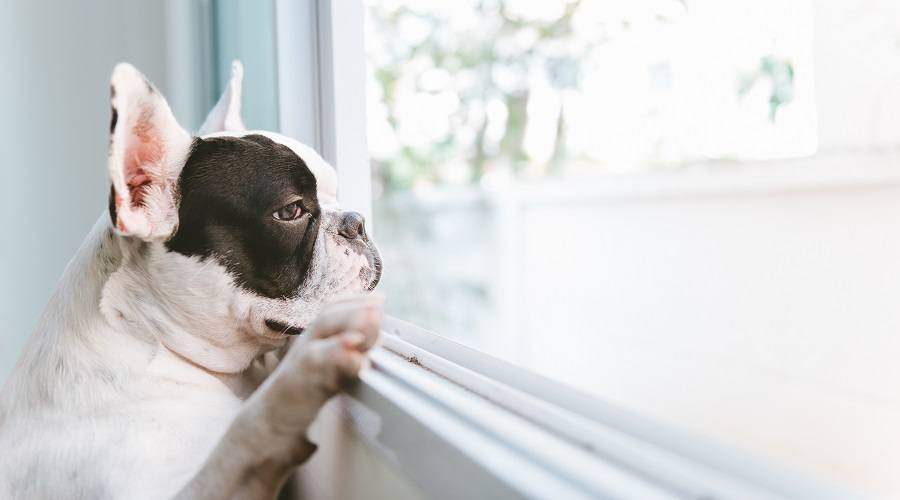
Quick Takeaway: Puppy anxiety is usually a mix of inexperience, uncertainty, and growing pains. Adult anxiety is usually a result of life stress. Both need patience, but if your adult dog suddenly starts acting like the world’s ending, that’s your sign it’s time to step in.
Coming up next: Are some breeds just built to worry more than others? (Spoiler: yes, and some of them make it an Olympic sport.)
Breed Drama: Are Some Dogs More Anxious Than Others?
Some dogs seem chill no matter what. Others act like the sky is falling if you so much as sneeze. Breed tendencies play a big role in anxiety, and knowing where your dog lands can explain a lot about their behavior.
Herding Breeds
Border Collies, Australian Shepherds, Shelties
These herding dogs were bred to control chaos, which means they notice everything. Loud noises, moving objects, even a squirrel three streets away, can keep them on edge.
Velcro Breeds
Vizslas, Weimaraners, Dachshunds, Italian Greyhounds
These Velcro dog breeds glue themselves to you like duct tape. They thrive on constant company, which makes them more prone to separation anxiety the moment you step out the door.

Toy & Small Breeds
Chihuahuas, Yorkies, Pomeranians
Tiny dogs, big emotions. They can be bold one minute and trembling under a blanket the next. Genetics, plus their size, make them especially reactive to stress.
Retrievers & Sporting Breeds
Labradors, Golden Retrievers, Spaniels
Usually steady, but they hate boredom. If they don’t get enough exercise or stimulation, anxiety often sneaks in as destructive behavior or restlessness.
Quick Takeaway: Breed doesn’t guarantee anxiety, but it can stack the odds. Some dogs are wired to worry more, and knowing that helps you choose the right strategies before labeling them “bad.”
Coming up next: the myths about dog anxiety that might actually make things worse.
4 Dog Anxiety Myths That Might Be Making It Worse
When it comes to dog anxiety, advice is everywhere, and not all of it is good. Some of the most common “fixes” floating around can actually make things harder for you and your dog.
1. “Just Ignore Them, They’ll Stop”
Anxious behavior isn’t attention-seeking. If you ignore it, the anxiety doesn’t go away; it usually gets worse. It’s like telling someone mid-panic attack to “just calm down.” Not super helpful.
2. “It’s Just Bad Behavior”
Chewing, whining, accidents in the house, these aren’t your dog being defiant. They’re stress signals. Treating them like misbehavior often piles punishment on top of anxiety, which backfires fast.

3. “They’ll Grow Out of It”
Some puppies do settle as they mature, but many dogs don’t magically outgrow anxiety. If anything, untreated anxiety in adults tends to snowball into bigger problems.
4. “CBD Fixes Everything”
CBD can help some dogs, but it’s not a miracle cure. Think of it as one tool in the toolbox, not the whole toolbox. And yes, always run it by your vet before you experiment.
Quick Takeaway: Dog anxiety isn’t stubbornness, and it’s not something you can punish or ignore away. Believing these myths doesn’t just waste time; it can actually make anxiety worse.
Coming up next: what vets and trainers actually recommend when it comes to helping anxious dogs.
When To Bring In The Pros
Most cases of dog anxiety can be improved with structure, training, and supportive tools. But sometimes you need outside help. Knowing when to call in the experts can save you a lot of trial and error.
What Vets and Trainers Can Do
- Veterinarians can rule out medical issues that look like anxiety, suggest safe supplements, or prescribe medication when needed.
- Trainers and Behaviorists create step-by-step plans to help dogs unlearn panic responses. A trainer focuses on behavior change, while a veterinary behaviorist combines medical insight with training strategies.
If your dog’s anxiety is moderate to severe, you might want to contact a professional dog trainer to help you find the best training approach for your dog.
If your dog has milder symptoms, you might consider Brain Training for Dogs, an online course that teaches basic commands and mental games to help keep their mind active, reducing boredom.
4 Signs It’s Time for Professional Help
- Your dog’s anxiety is so severe that they’re harming themselves or destroying property.
- You’ve tried training and supportive tools, but nothing has made a real difference.
- The anxiety has lasted for months without improvement.
- Daily life, for you and your dog, is being disrupted.
The Role of Medication
In some cases, medication is part of the plan. Drugs like fluoxetine (Prozac), clomipramine, or trazodone don’t sedate your dog; they balance brain chemistry so training actually works. Think of them as training aids, not shortcuts.
Prescription Medications
For dogs with a serious anxiety disorder, some veterinarians may recommend prescription medications, such as SSRIs and antidepressants like fluoxetine and clomipramine.
Learn more about clomipramine for dogs.
For predictable anxiety-causing situations like fireworks, thunderstorms, or car rides, your veterinarian might prescribe an anti-anxiety medication, such as benzodiazepine, to help your dog cope. Some vets may also recommend gabapentin, tramadol, or trazodone to treat mild to moderate anxiety.
Over-The-Counter Medications
Some vets may recommend Benadryl (diphenhydramine) for mild to moderate situational and temporary anxiety in dogs. But check with your vet first.
While it’s generally considered safe for dogs, Benadryl is a sedative. It can cause drowsiness, but it may also induce hyperactivity in some dogs. Therefore, it is recommended that you consult your veterinarian for their recommendation on its use and safe dosage.
Quick Takeaway: Calling in a pro or meds doesn’t mean you’ve failed. It means you’re serious about giving your dog the best shot at a calmer, happier life.
Dog Anxiety FAQs
Dog anxiety doesn’t always look the same, and a lot of owners have the same questions once they realize what’s going on. Here are some of the most common ones I hear.
If your question isn’t on the list, drop it in the comments and we’ll do our best to answer.
How Do I Know If My Dog Has Anxiety Or Is Just Bored?
Bored dogs usually perk up when given something to do, like a walk or a toy. Anxious dogs stay restless or stressed even after activity. If the behavior happens mostly when you leave, it’s probably anxiety.
Can I Treat Dog Anxiety Naturally?
Yes, in mild cases. Natural remedies, such as calming chews, pheromone diffusers, or white noise, can help. For more severe anxiety, natural options usually need to be paired with training or professional support.
What’s The Fastest Way To Calm A Dog With Anxiety?
There’s no one-size-fits-all trick, but creating a safe space, adding background noise, and giving them a chew or toy are good quick wins. For long-term improvement, training is key.
Do Dogs Grow Out Of Anxiety?
Some puppies outgrow anxiety as they mature, but most adult dogs won’t without help. In fact, anxiety often gets worse if it isn’t addressed.
When Should I Talk To My Vet About Anxiety?
If your dog’s anxiety is severe, lasts more than a few months, or causes destructive behavior or self-harm, it’s time to bring in professional help.
What Are Some Additional Ways To Keep My Dog Relaxed?
In addition to the tips above, Doggy Dan, The Online Dog Trainer, also recommends these ways to reduce anxiety.
- Take regular walks
- Create a safe space in your home, possibly with an anti-anxiety bed
- Schedule play dates with other dogs
- Try Doggy Day’s Calming Code Method
- Participate in daily training exercises
- Enroll in doggy daycare
- Consider massage therapy
How Can I Prevent Anxiety In My Dog?
While some dogs are just naturally anxious by nature, there are ways to help your dog avoid stress or at least lessen its intensity.
Proper socialization with new people, dogs, and other animals, and new experiences early on can help prevent anxiety from developing in the first place. Obedience training is also a great way to set your dog up for mental and behavioral success.
Keep Your Dog Happy, Healthy & Calm
Managing dog anxiety is just one way to give your pup their best life. Regular vet visits are important because catching small issues early can prevent more significant health problems down the line.
Want to strengthen your bond? Check out simple ways to show your dog you love them. The right dog food fuels their body and mind, while the best dog beds give them the safe, cozy rest they need to recharge.
Share Your Story! Has your dog struggled with anxiety? Tell us about it in the comments, including what worked, what didn’t, and how you helped them through it. Your experience might be exactly what another reader needs.
